Utopia/Dystopia
By Colleen Cody
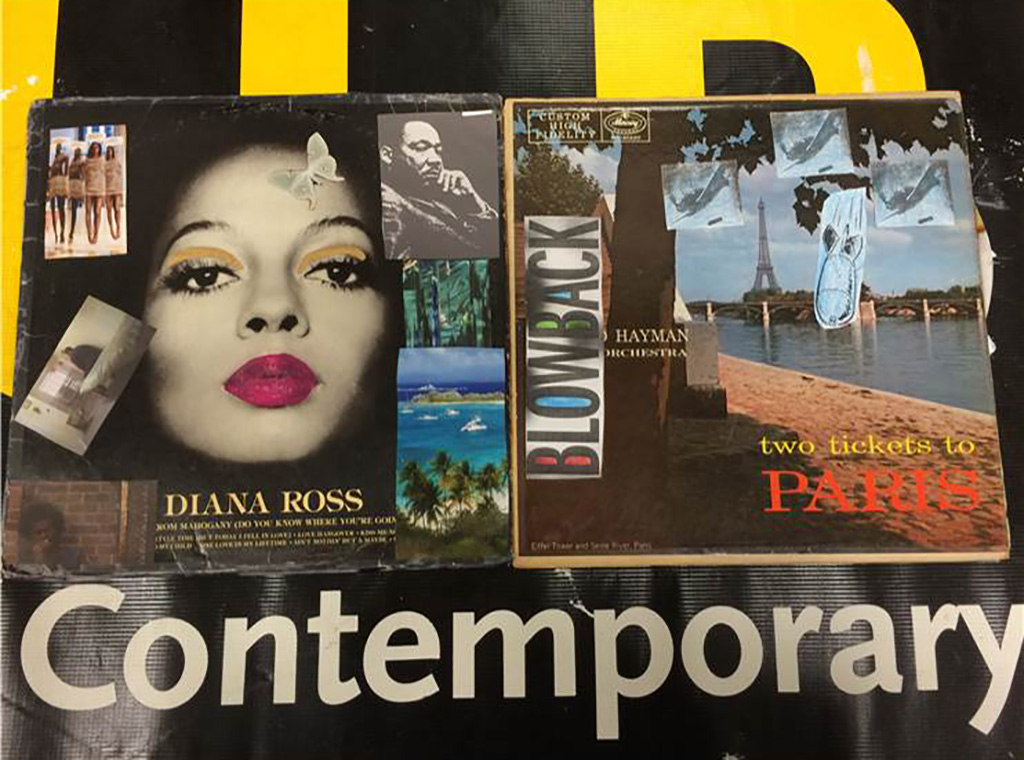
Students studied utopian/dystopian societies via multiple literary and non-fictional texts, civil rights speeches, films, music, and visual arts. Students also led Socratic discussions on utopian/dystopian societies and the concept of social justice. The culminating art project was for students to create their own vision of utopia/dystopia by redesigning an album cover from the hopeful era of the 60s or 70s. They were inspired by the album covers Towards a Walk in the Sun (2005) and 6 Minutes Till Nation Time !!! (2005) by Jamal Cyrus, featured in the Freedom Principle exhibition at the MCA.
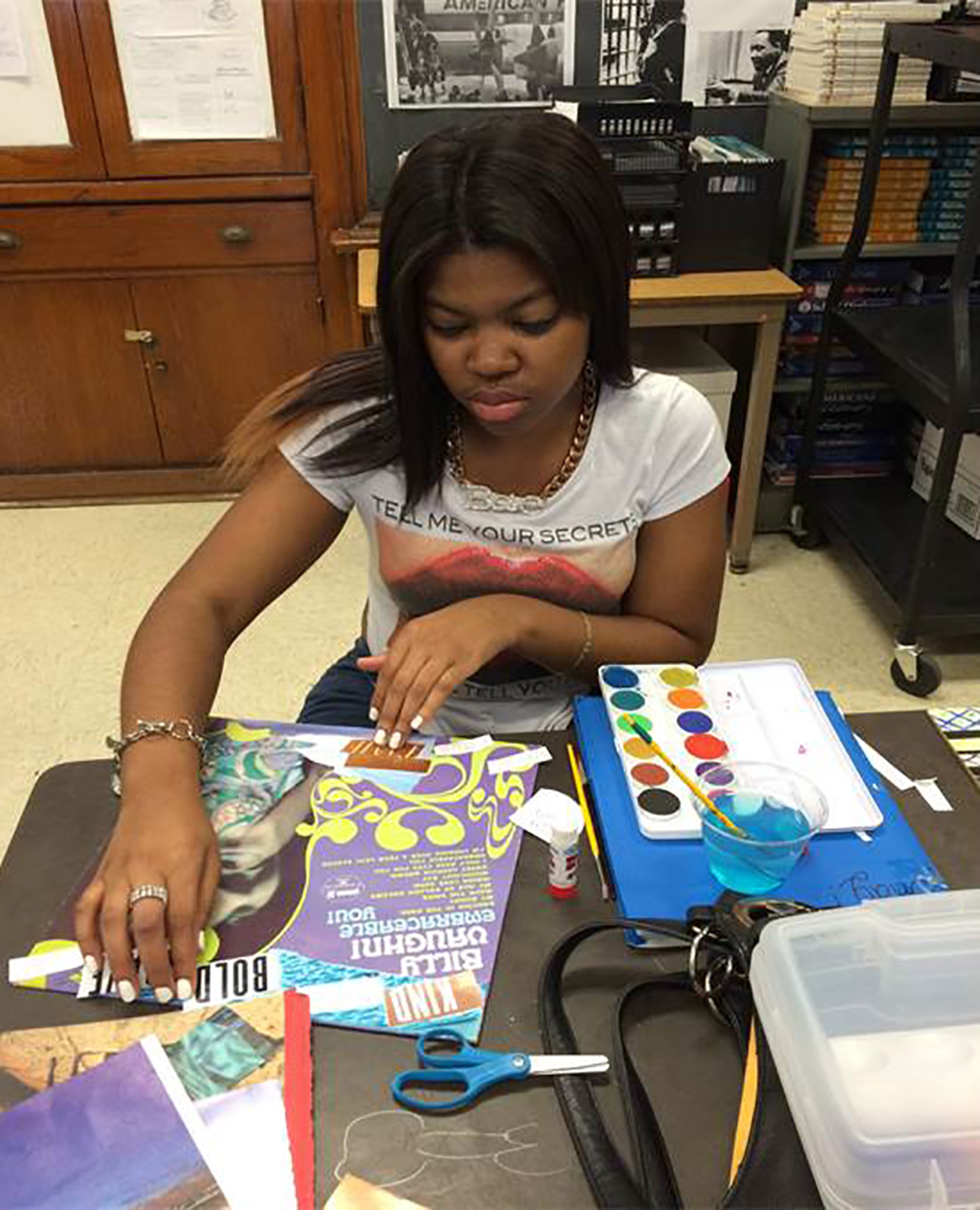
Goals and Objectives
- Students will interpret the meaning of figurative language within a text.
- Students will analyze texts for word choice, questioning how the use of language advances meaning and affects the tone and pacing of the work.
- Students will demonstrate understanding of the terms premise, purpose, and argument as used in public advocacy.
- Students will synthesize the major themes and ideas in two or more texts and analyze how themes interact and build on one another.
- Students will demonstrate the use of originality and imagination when creating contemporary artwork.
- Students will explore the legacy of integrationist civil rights versus the separatist Black Power movement.
- Students will research the historical context and political struggles reflected in the Black Arts Movement in preparation for their visit to The Freedom Principle: Experiments in Art and Music at the MCA.
- Students will gain perspective on the current Israeli/ Palestinian crisis as portrayed in the Julian Schnabel interview and film, Miral.
Guiding Questions
- What is social justice? How can art support social justice?
- Why do certain contemporary artists continue to draw from and engage with the Black Nationalism movement of the 1960s for inspiration, critique and elaboration?
- What are the ideals (freedom, responsibility, justice, community, etc.) that should be honored in a utopian society?
- What are the purposes and/or consequences of creating and /or maintaining a dystopian society?
- Is utopian society attainable? At what cost would it be worth attaining?
- How can we use multiple perspectives to gain a greater understanding of ourselves and the world?
- How does one use persuasion effectively, and for what purpose?
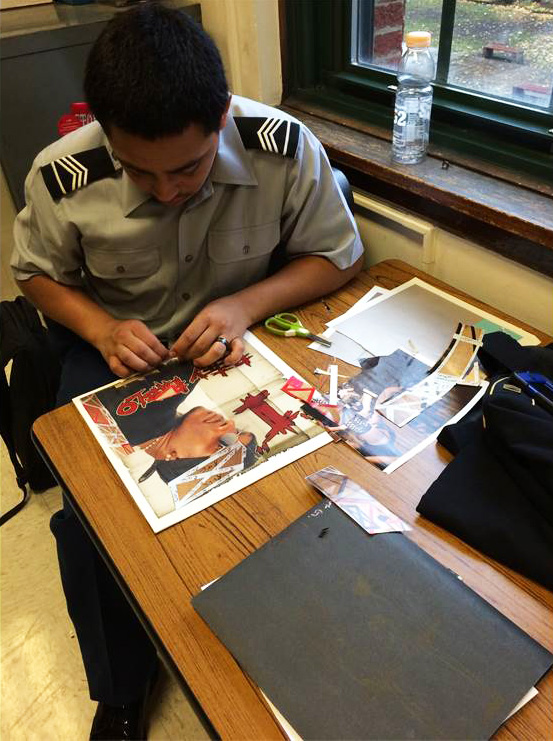
Documentation + Assessment
Documentation:
Students documented the project by taking photographs with their cell phones and then creating a collective PowerPoint.
Assessment:
- Create a comparative analysis essay on Martin Luther King Jr. and Malcolm X.
- Write reactions to questions related to Julian Schnabel’s film, Miral. Interpret a political cartoon about the Israeli/Palestinian conflict.
- Thoughtfully answer critical analysis questions with short responses connected to excerpts from the novels Divergent, Insurgent, and Allegiant as related to your personal view of utopia/dystopia.
- Culminating Project (redesigned album artwork): Reflect on your understanding of civil rights and social justice movements and on how these struggles relate to the concept of a utopian or dystopian society. Use specific lines of text and imagery in combination with an album cover from the 1960s or 1970s to develop a narrative illustration of your own vision of utopia or dystopia.
Timeframe + Learning Activities
Timeframe
One semester (10 Weeks).
Learning Activities
- Students read, discussed, and wrote reactions to texts connected to social justice and utopia/dystopia (see reference list).
- Students outlined, discussed, and illustrated concepts from the utopian and dystopian texts they studied.
- Students formulated and exchanged ideas of what a perfect society would look like, versus a nightmarish society.
- Students learned about contemporary civil rights issues in Israel and Palestine and discussed the relationships between this conflict and dystopian/utopian ideals.
- Students’ investigation of utopia/dystopia culminated in a narrative illustration in which they created their own vision of Utopia/Dystopia using text and imagery inspired by the multiple literary texts they studied. They expressed their personal vision of a utopia or dystopia applying the text and imagery to appropriated album covers from the 1960s and 1970s as a way to connect their vision of a different society with the powerful social movements of this era.
- The students shared their progress in small groups before finishing the project. They exchanged ideas about their artistic intentions, while conveying some of the hidden meanings behind the imagery that they had created for their album covers. Upon completion, students formally critiqued each of the finished works.
- An exhibition of their work was displayed in the spring at the Painted Door Gallery.
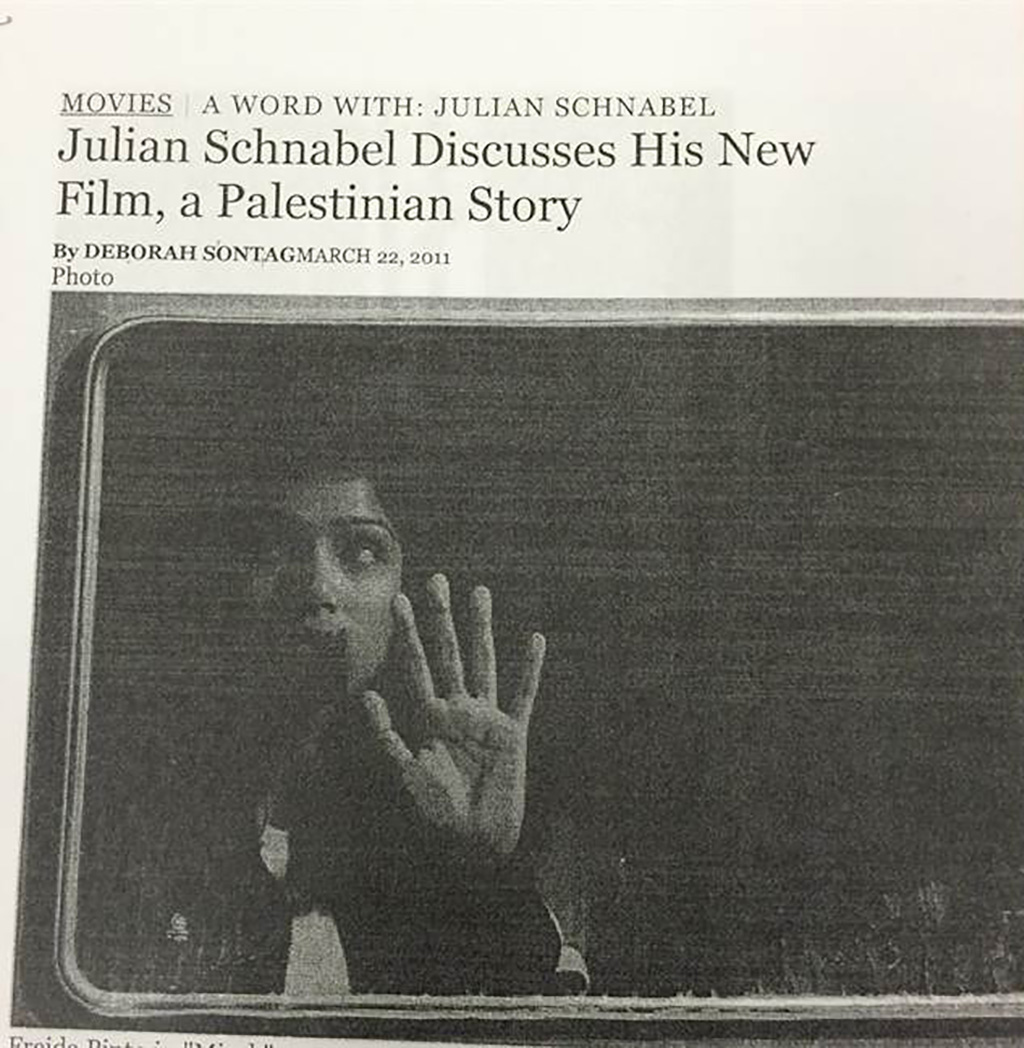
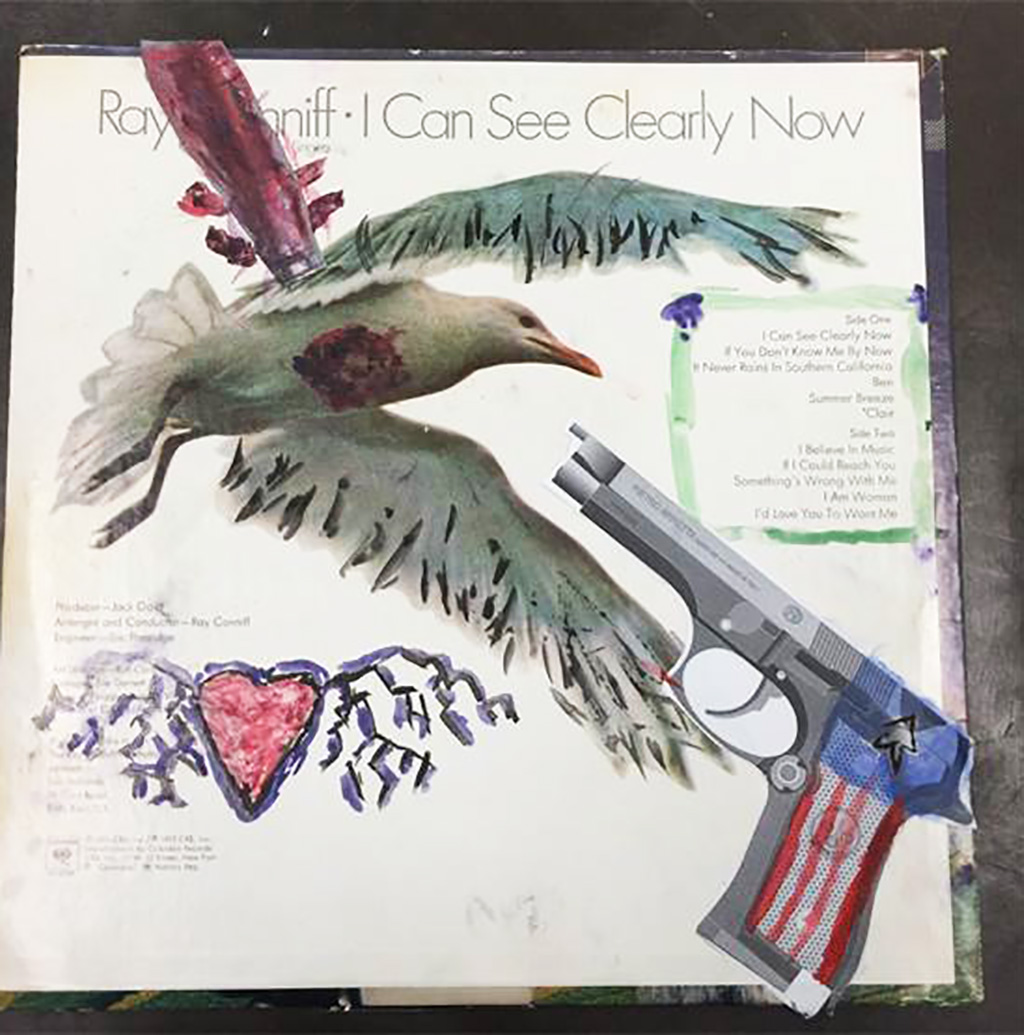
Materials
Various fictional and non-fictional texts and films. Found collage paper images, glue, Sumi paints, assortment of paintbrushes, color inks, black ink, markers, graphite, found/selected old album covers, and a portable record player.
MCA Connections
Students studied the civil rights movement and Black Power movement before visiting The Freedom Principle: Experiments in Art and Music at the MCA Chicago. They learned that the installations and artworks in the exhibition were directly related to the Black Arts and AfriCOBRA movements. Upon visiting the museum, my students were inspired by the conceptual artist Charles Gaines’s Manifestos 2, especially his display of the Malcolm X speech at the Ford Auditorium. They were also impacted by the relationship between the personal and the public in Glenn Ligon’s Give Us a Poem, a black and white neon installation that alternately flashed ME/WE. The multimedia installations in the exhibition provided insight into how contemporary artworks can deliver profound and insightful messages, and the students especially enjoyed Hors-champs, a two-channel video installation with stereo sound of experimental music by Stan Douglas, a set-up which required the students to move back and forth to view both sides of an improvisational jazz performance.
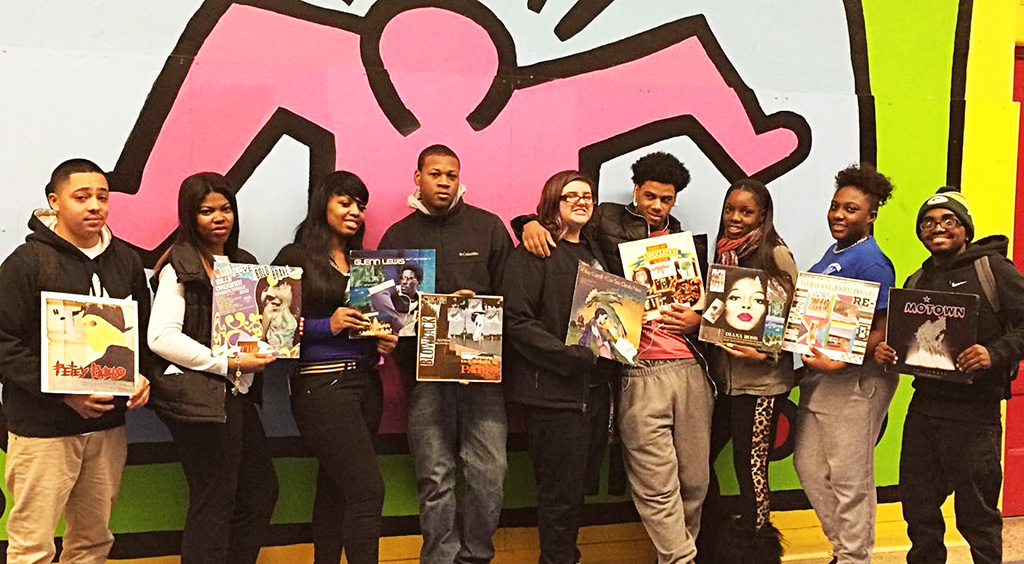
References + Resources
- I’ve been to the Mountaintop and Black Power — Martin Luther King
- The Ballot or the Bullet — Malcolm X
- Selma — 2014 film directed by Ava DuVernay
- Malcolm X — 1992 film directed by Spike Lee
- Comparative Essays: Stride Toward Freedom — Martin Luther King and Malcolm X
- Music: Super Fly + Motown songs. Records from inside the redesigned album covers.
- Non-fiction article, “From Fighting to Friending,” Ethan Bronner
- Miral — 2010 film directed by Julian Schnabel
- Excerpts from the book trilogy Divergent, Insurgent, and Allegiant by Veronica Roth, and excerpts from the the film versions of Divergent (dir. Neil Burger, 2014) and Insurgent (dir. Robert Schwentke, 2015)
Colleen Cody
Wells Community Academy High School
Colleen started out on the North Shore at Highland Park High School substitute teaching for an Alternative Education Program with only her art certification. This is where she became inspired to become a special education teacher, after working with students who had an array of emotional issues as well as learning disabilities. She integrated the arts into her teaching by having students draw imagery from stories. Her students learned to create books using Japanese binding techniques, and then illustrated the books as well.
She eventually came back to the city because of her desire for social justice. After receiving her MED from National Louis University, Colleen came to work for Lawrence Hall Youth Services, which is a private therapeutic day school attached to a child welfare agency. Many of her students had been severely abused, resulting in their placement in a residential setting. From there, Colleen went to the Near North Special Education Center, a public elementary day school. She avidly worked at creating a safe learning environment by encouraging positive social interaction, active engagement, and self-motivation. She further developed creative approaches toward instruction that involved making adaptations for diverse learning groups.
Colleen reflects on her process:
While visiting the MCA, the students studied and discussed the collaged album covers about Black Nationalism on display. They specifically studied the album covers by Jamal Cyrus. Using these album covers as inspiration for their projects, students then traveled to a local record shop to select old album covers that visually appealed to them. During their alteration of these album covers, using text and imagery to create their visions of utopia/dystopia, students consistently collaborated and conferred with each other while making their artistic decisions. The students were supportive of one another’s creative expressions and viewpoints. By the end of the semester, it was apparent that this group of diverse learners was more closely bonded as a result of the dialogue that emerged during the project, which has been a transformative learning experience for the students. After the final critique, students closely gathered around to play some of the records from their album jackets on a portable record player. It was endearing to see how enthralled they were to hear the 60s and 70s music, dancing and talking about their artworks and connecting with one another.